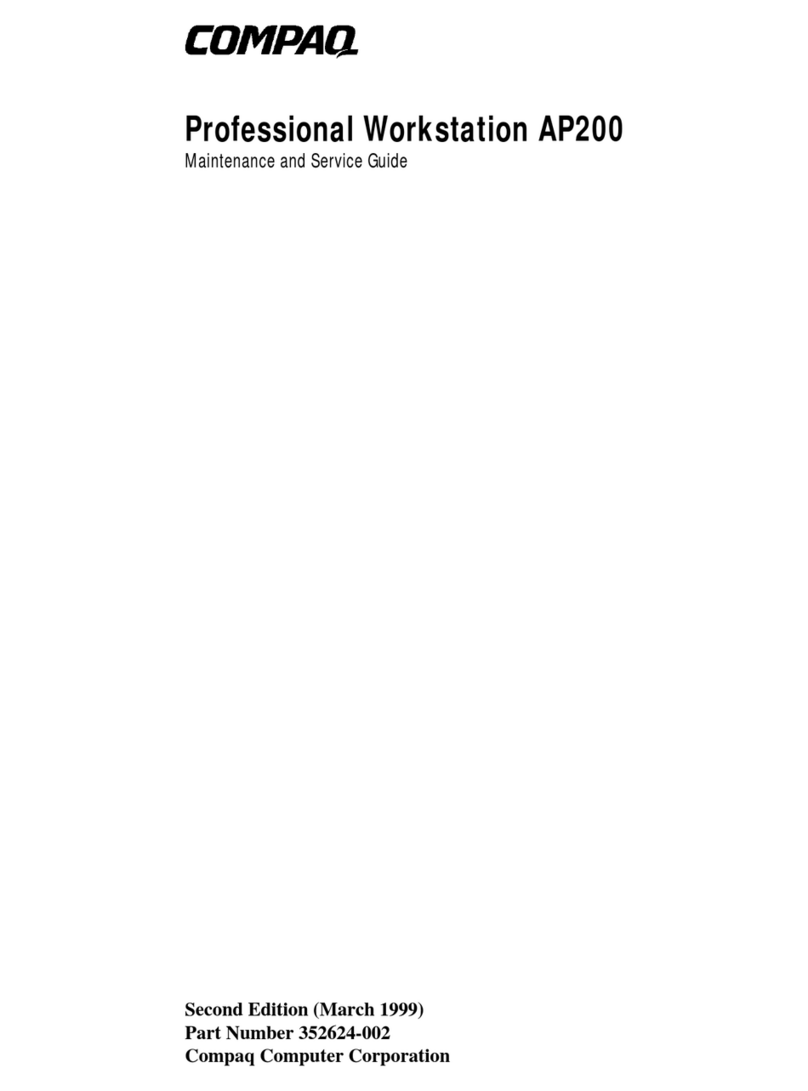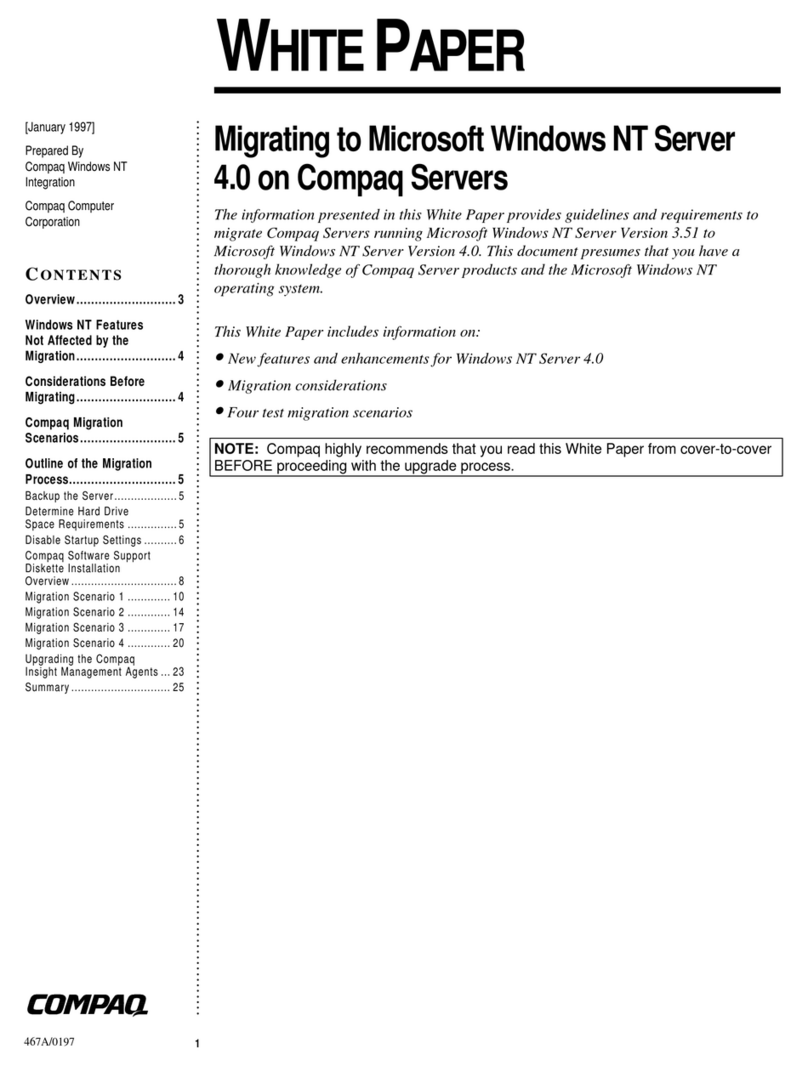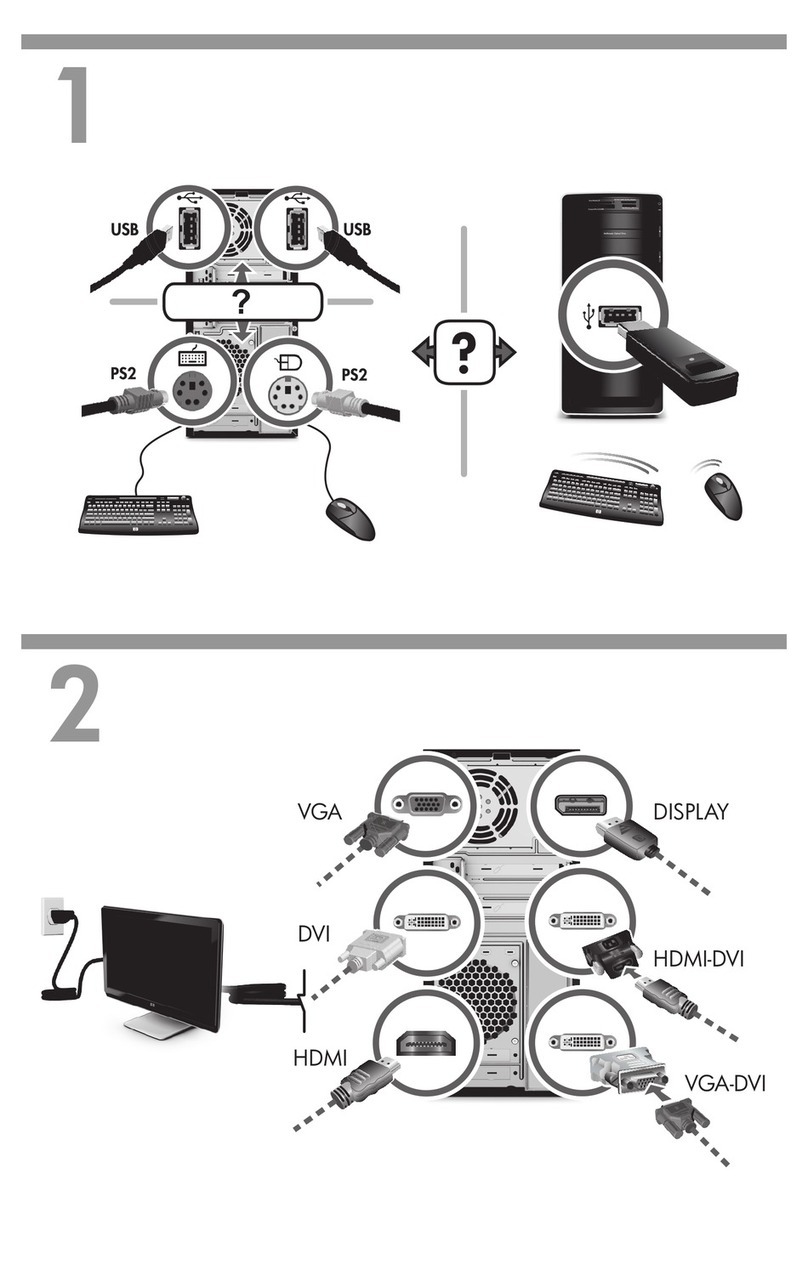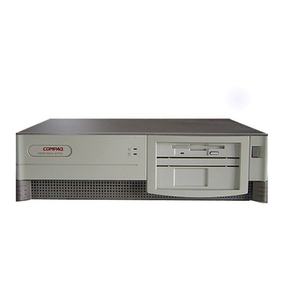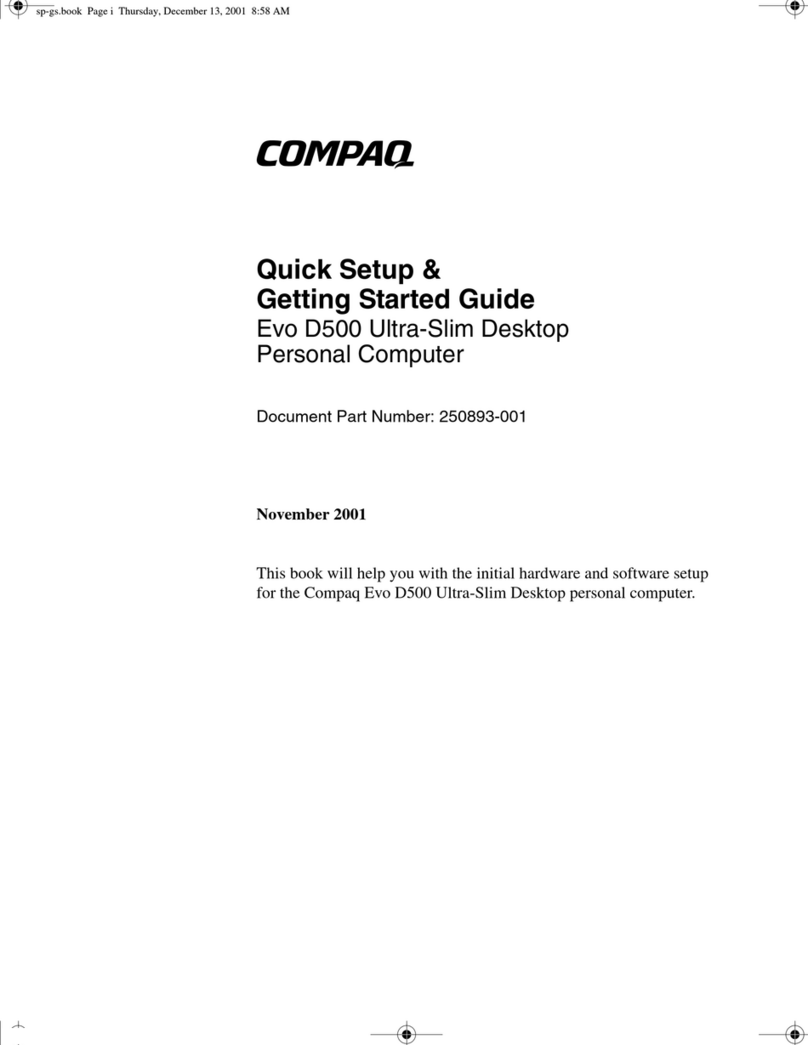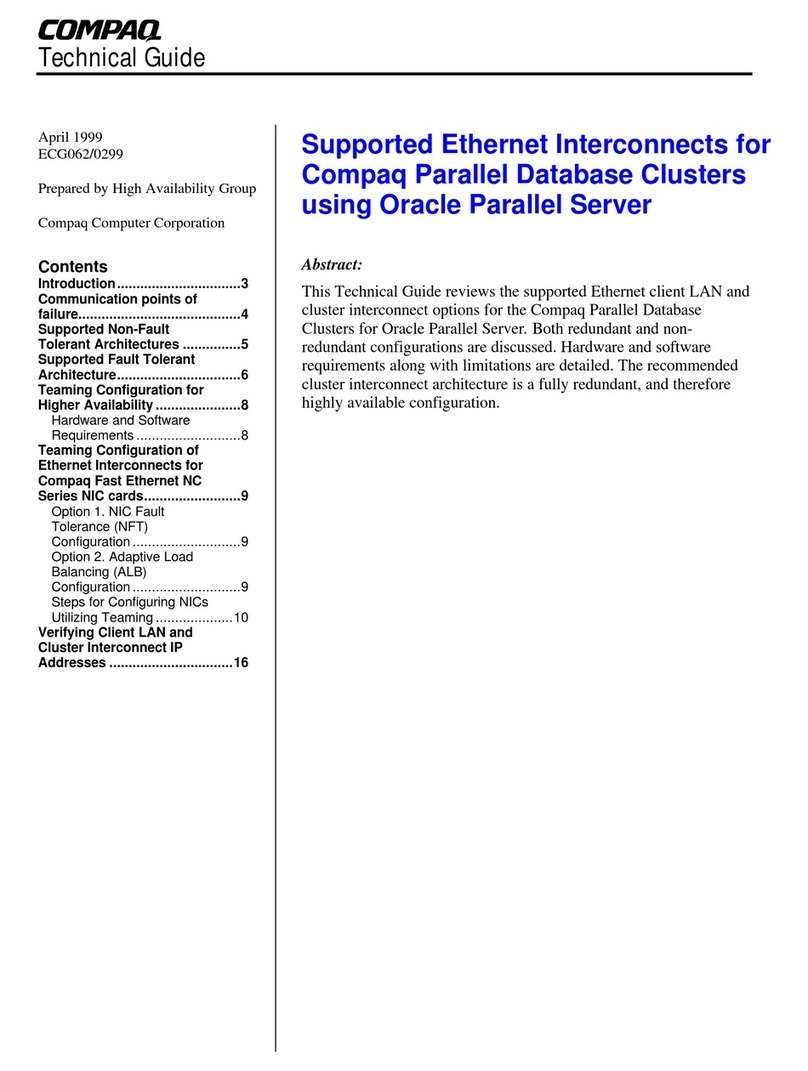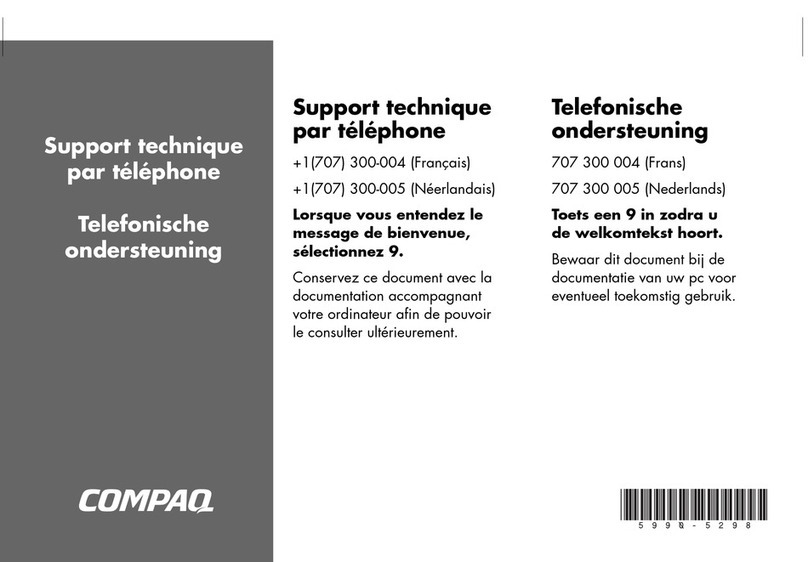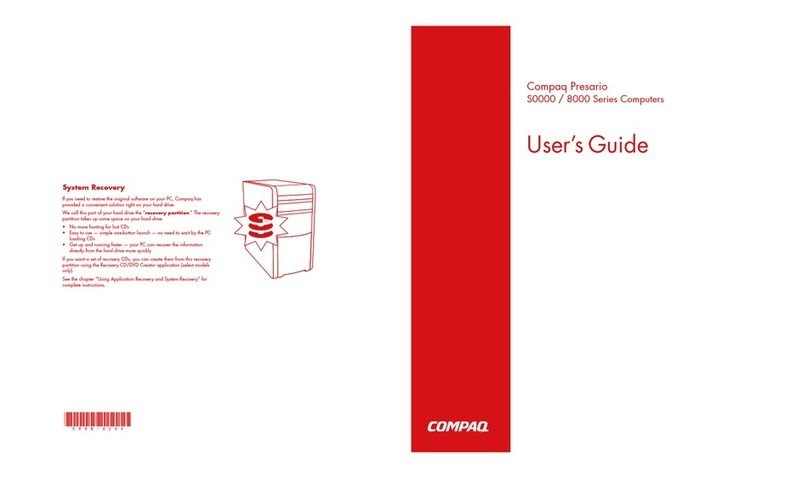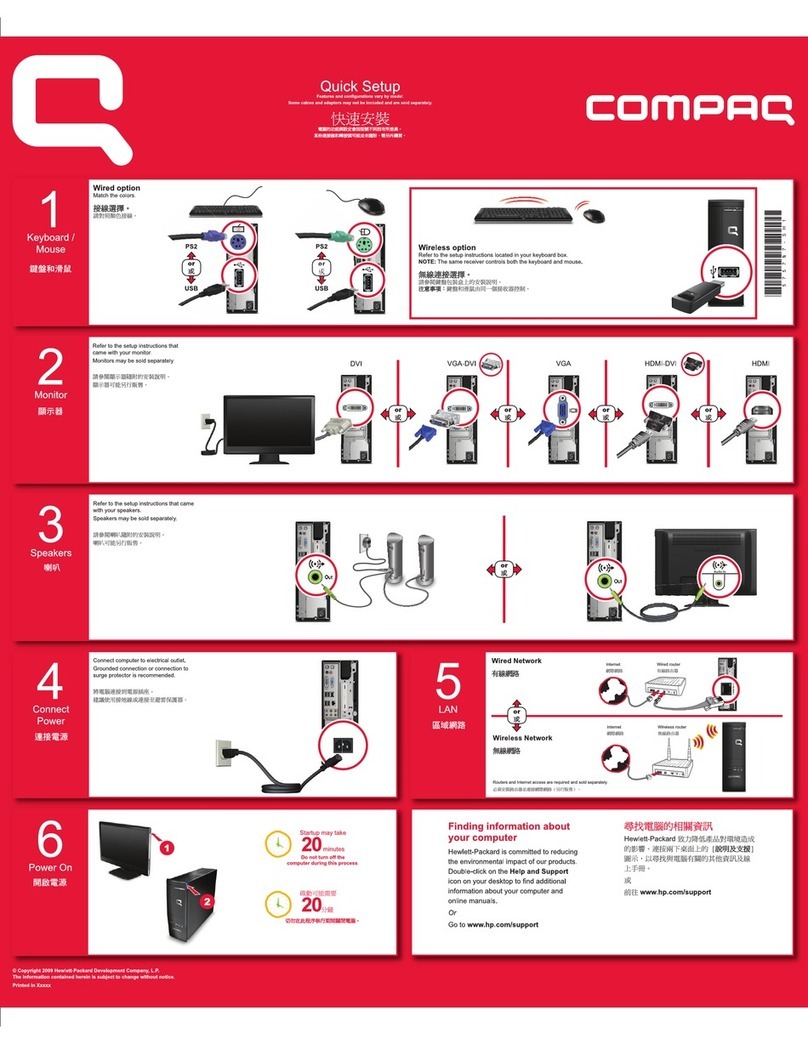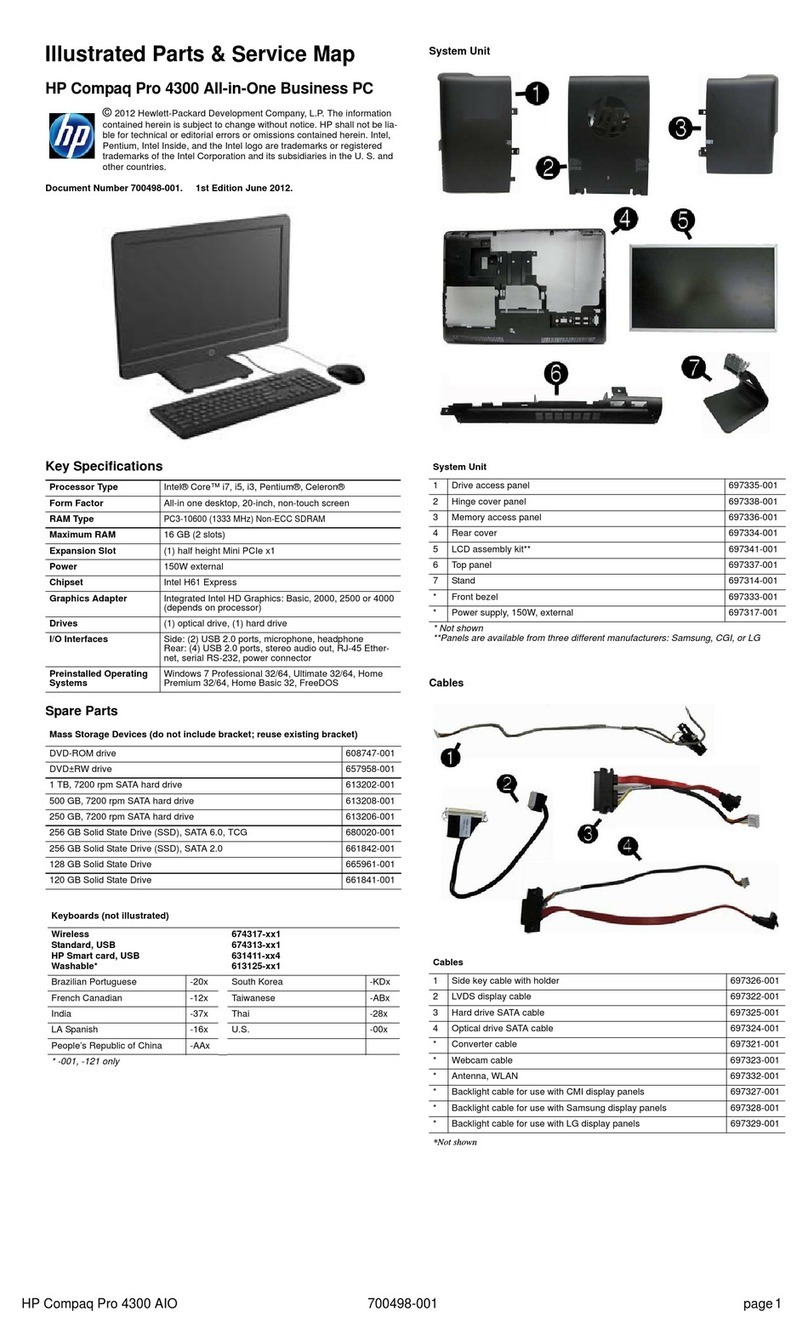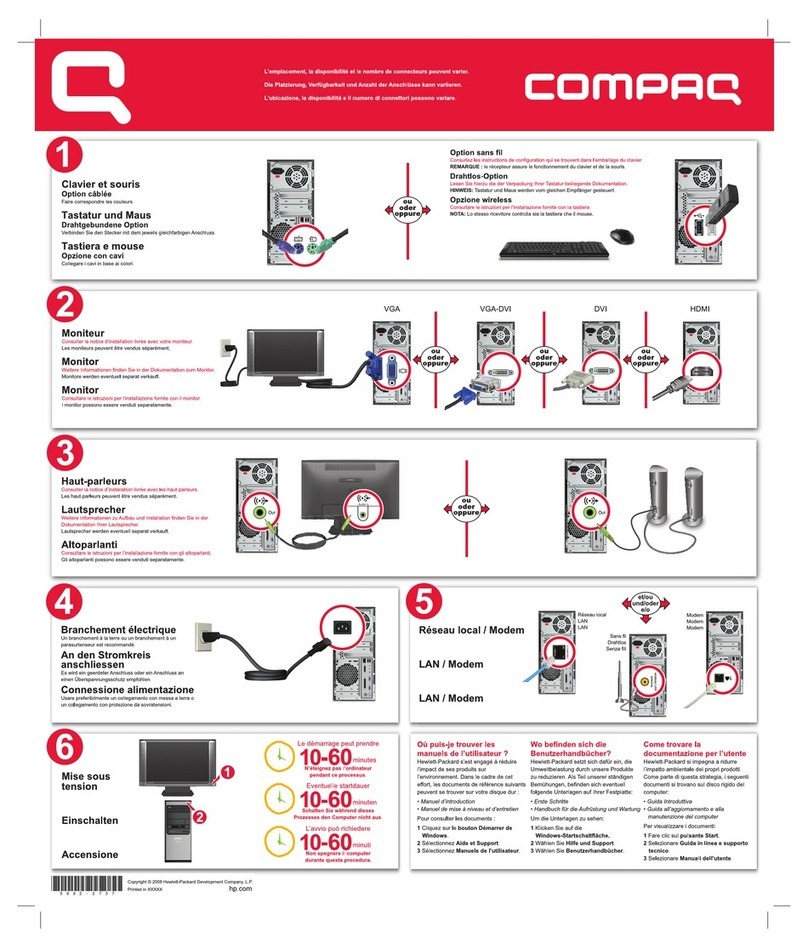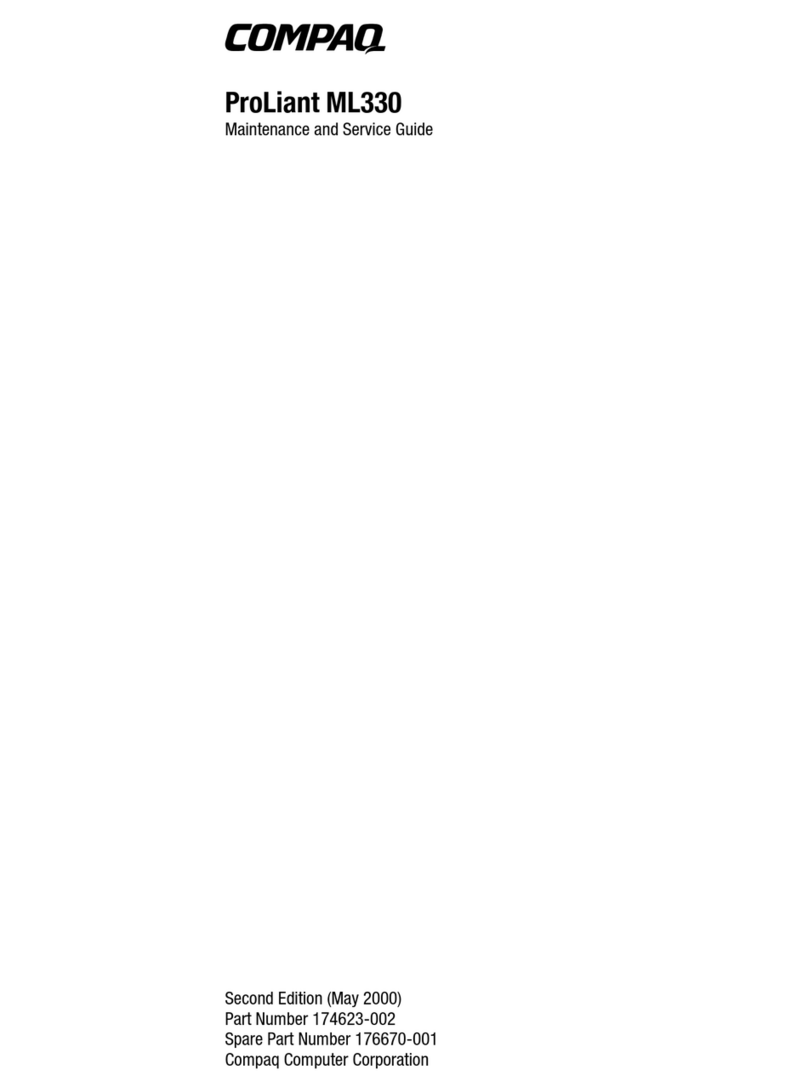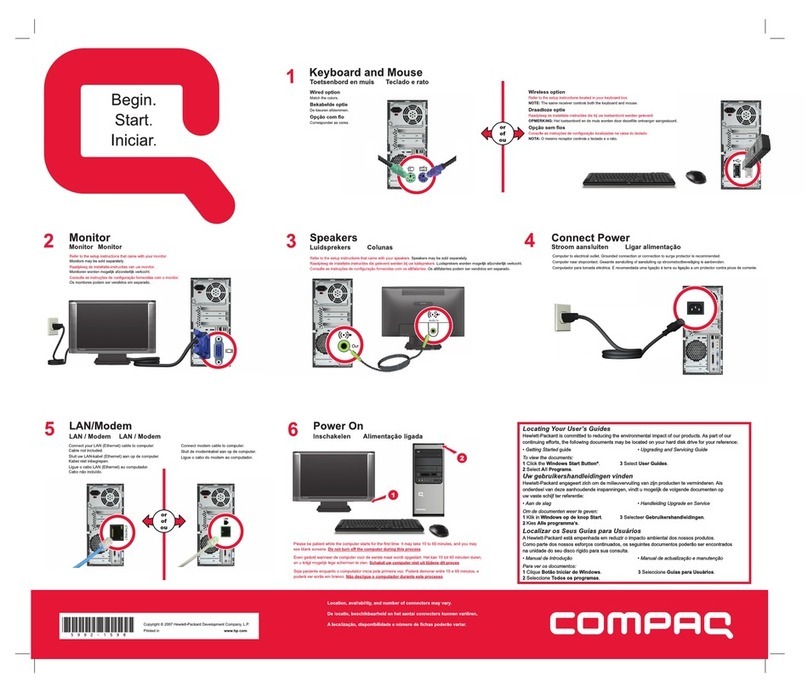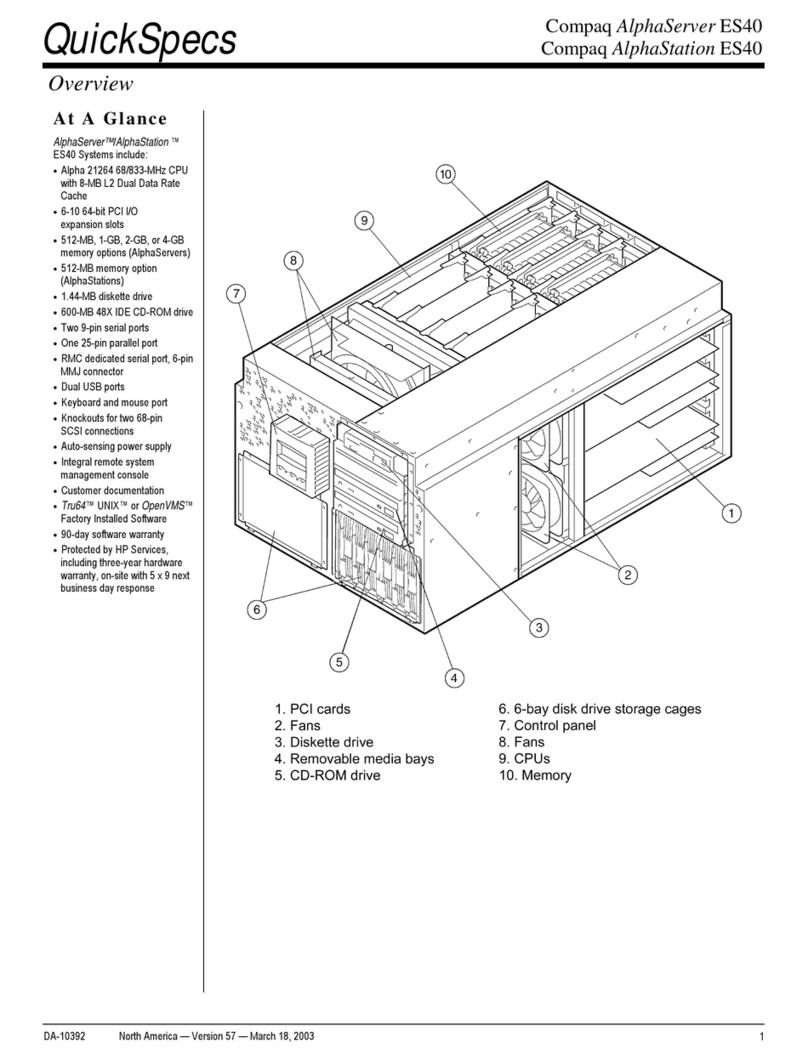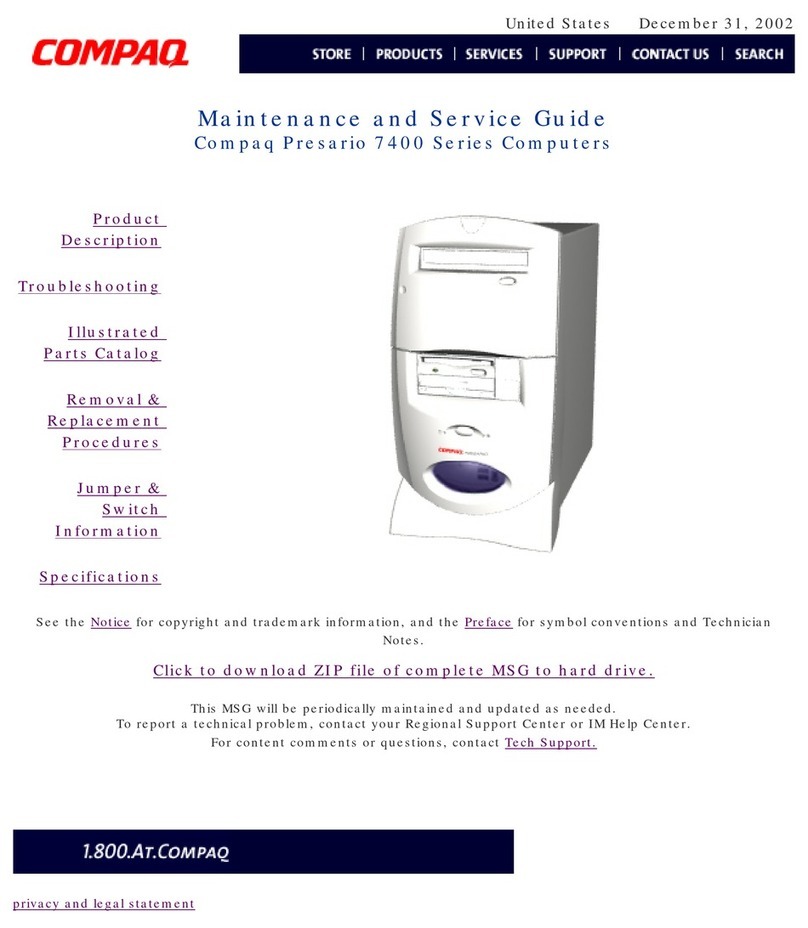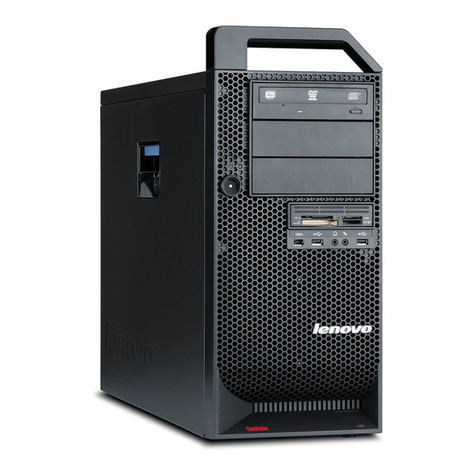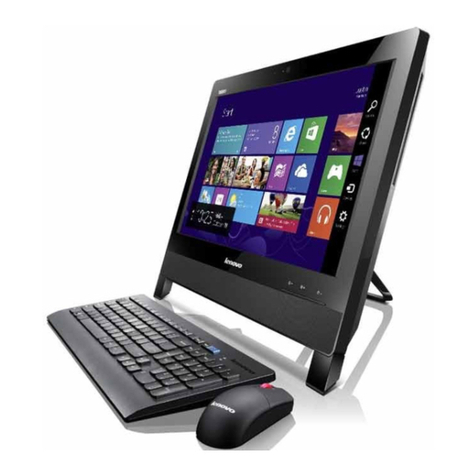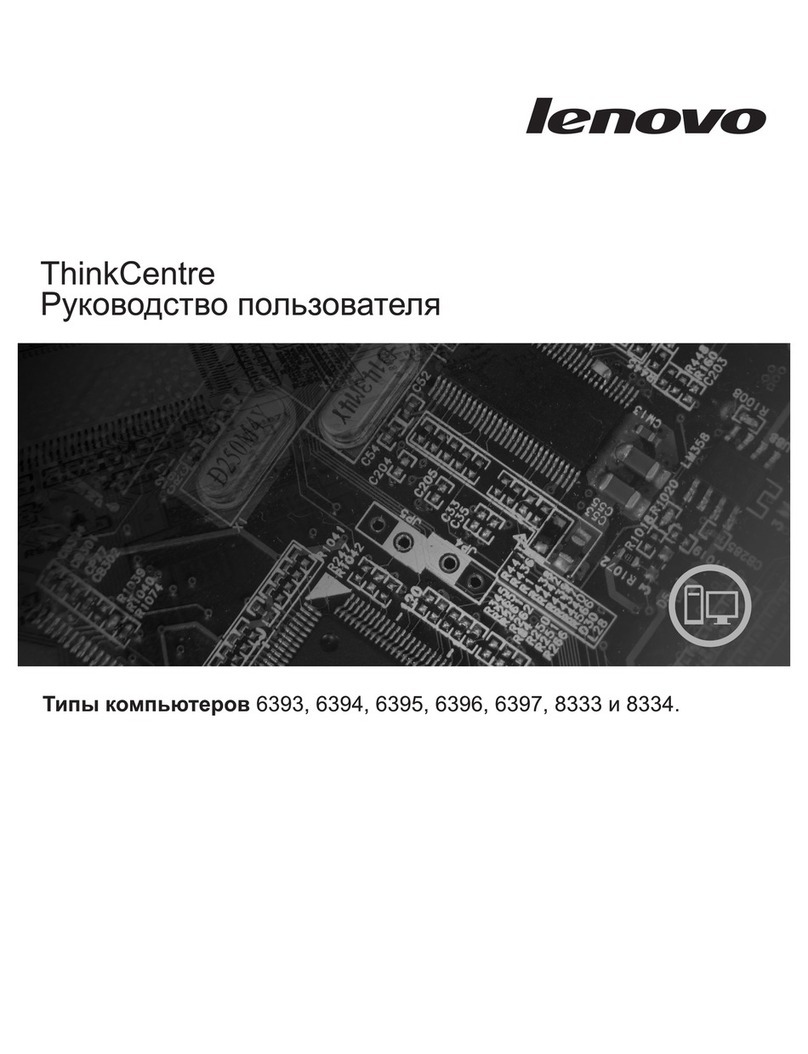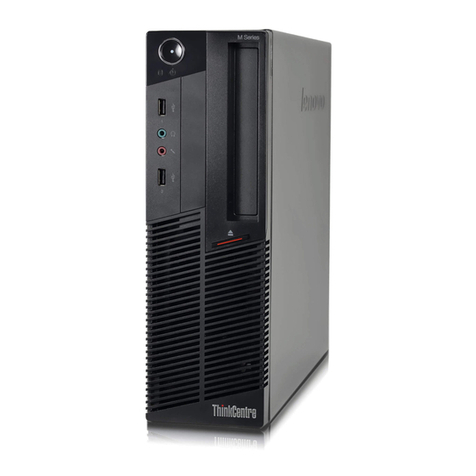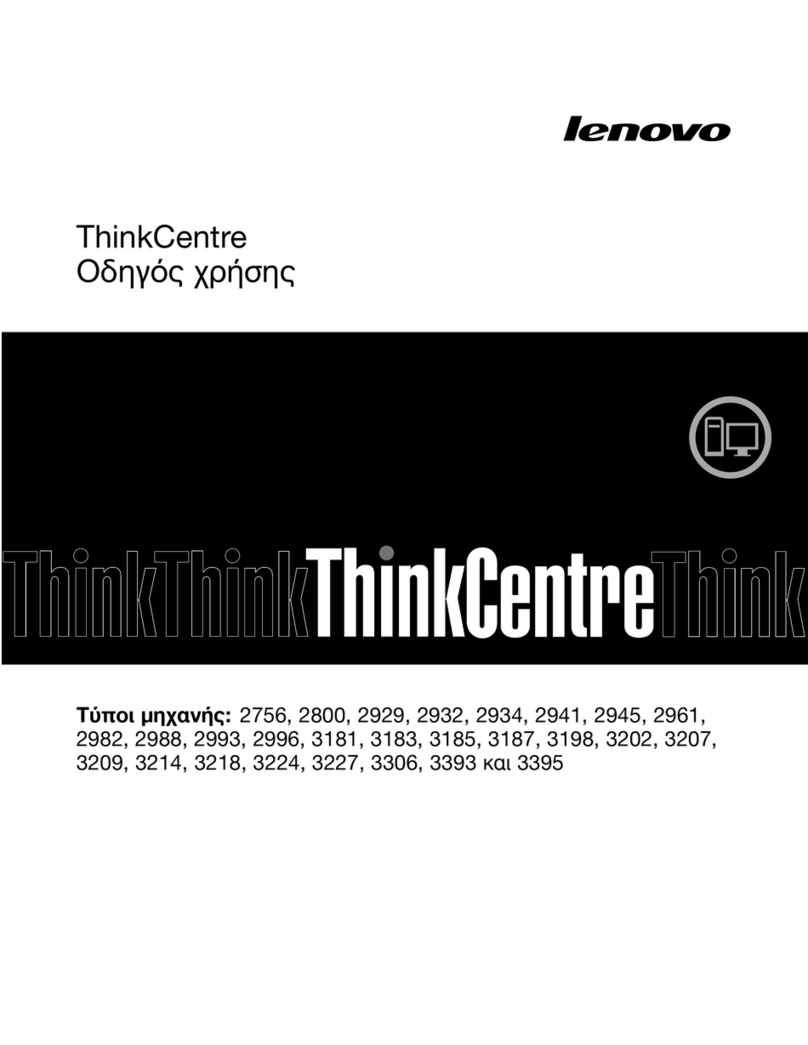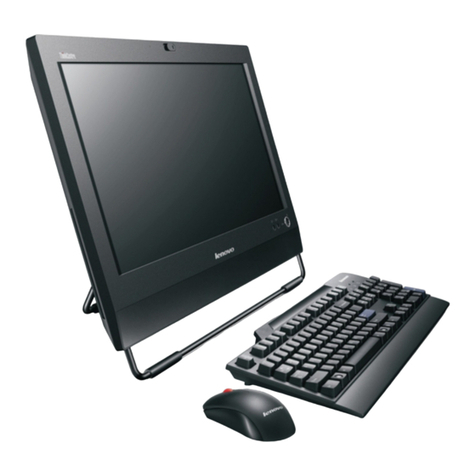
dx2290 Illustrated Parts & Service Map, MT Chassis 448511-002 page 2
System Board
System Setup and Boot
Basic system information regarding system information, setup, power management, hardware,
and passwords is maintained in the Setup Utility held in the system ROM. The Setup Utility is
accessed by pressing the F10 key when prompted (on screen) to do so during the boot sequence.
If the screen prompt opportunity is missed, a restart will be necessary.
POST Error/Warning Messages
Once the display is available, the BIOS will classify all errors detected during POST into three
categories:
Miscellaneous Parts
1 Heatsink with alcohol pad and factory-applied thermal grease 448668-001
* Heatsink, Intel class K (for use in computers with Pentium D processors) 458806-001
2 Chassis fan 449207-001
* Mouse, PS/2, optical 417966-001
* Battery, real-time clock 153099-001
*Not shown
System Board Connectors and Jumpers (position of some untitled
components may vary in location)
ATX1 Main Power F_USB2 Card Reader
ATX12 CPU power in FDD Diskette drive
AUX_IN Front audio in HD_ AUDIO Not used
BT RTC Battery IDE1 IDE socket
CLR_CMOS Clear CMOS PCI1 PCI socket #1
CLR_PSWD Clear Password PCI2 PCI socket #
CPU_FAN Processor fan PCI_E PCI-E X1 socket
DIMM1 Memory socket 1 PCIEX16 PCI-EX16 socket
DIMM2 Memory socket 2 SATA1 First SATA socket
F_AUDIO1 Front audio SATA2 Second SATA socket
F_PANEL Front panel connector SYS_FAN Chassis fan
F_USB1 Front I/O USB connector
Computer Setup Menu
Heading Option/Description
Main System time - Allows you to set system time.
System date - Allows you to set system date.
Language - Allows you to select language.
Floppy Diskette A - Allows you to set A drive to: disabled, 720 KB, 1.44
MB, 2.88 MB, or not installed.
Drives 1 to 4:
• Allows you to set: type, mode, and enable/disable SMART capability
• Allows you to view: Device, vendor, size, LBA mode, Block mode,
PIO mode, Async DMA, Ultra DMA, SATA SPEED, and NCQ.
System Information - Lists the following main system specifications:
• Installed memory
• Memory Bank 1
• Memory Bank 2
• BIOS revision
• Core version
• Model number
• Product number
• Build ID
Computer Setup Menu (Continued)
Heading Option / Description
Advanced CPU type - view
CPU speed - view
Cache RAM - view
Plug and Play OS - not used
Primary video adapter - Allows you to select onboard, PCI-E, or PCI
Onboard video memory size - allows you to select 1MB or 8MB
PS/2 mouse - allows you to select disabled/enabled/auto detect
Onboard PATA/SATA adapters - enable/disable
USB Legacy Mode Support - enable.disable
Onboard LAN - enable.disable
Onboard LAN Boot ROM - enable.disable
Supervisor Password - change or enable password
User Password - change or enable password
Change Supervisor Password - change password
Onboard audio - set to auto/enable/disable
Hardware monitor - view CPU temperature, CPU fan speed, and system
fan speed
Power After AC Power Failure - select system restart to stay off/power on/auto
XD - enable/disable
Boot Boot time diagnostic screen - enable/disable
1st thru 4th boot devices - set boot priority
Floppy group boot priority - set priority within the group
CD-ROM group boot priority - set priority within the group
Hard drive group boot priority - set priority within the group
Network group boot priority - set priority within the group
Exit Exit saving changes
Exit discarding changes
Load setup defaults
Discard changes
Save changes
System Hardware Interrupts
IRQ System Function IRQ System Function
0 Timer Interrupt 8 Real-Time Clock
1 Keyboard 9 Unused
2 Interrupt Controller Cascade 10 Unused, available for PCI
3 Serial Port (COM B) 11 Unused, available for PCI
4 Serial Port (COM A) 12 Mouse
5 Unused, available for PCI 13 Coprocessor
6 Diskette Drive 14 Primary ATA (IDE) Controller
7 Parallel Port (LPT 1) 15 Secondary ATA (IDE) Controller
Category Action
Single critical error requiring shutdown • Screen is cleared
• Corresponding error message posted
• Pause to allow message to be read
• Turn computer off
Single serious errors requiring user
response
• Corresponding error message posted
• Pause to allow user input
• Continue per user selection
Single alert/warning requiring user
attention
• Corresponding error message posted
• Pause to allow user input
• Continue per user selection
Multiple errors including one critical error • Resolve first critical error
• Turn computer off
Multiple errors including serious ones as
defined above
• Resolve serious errors
• Proceed to alerts and warnings
